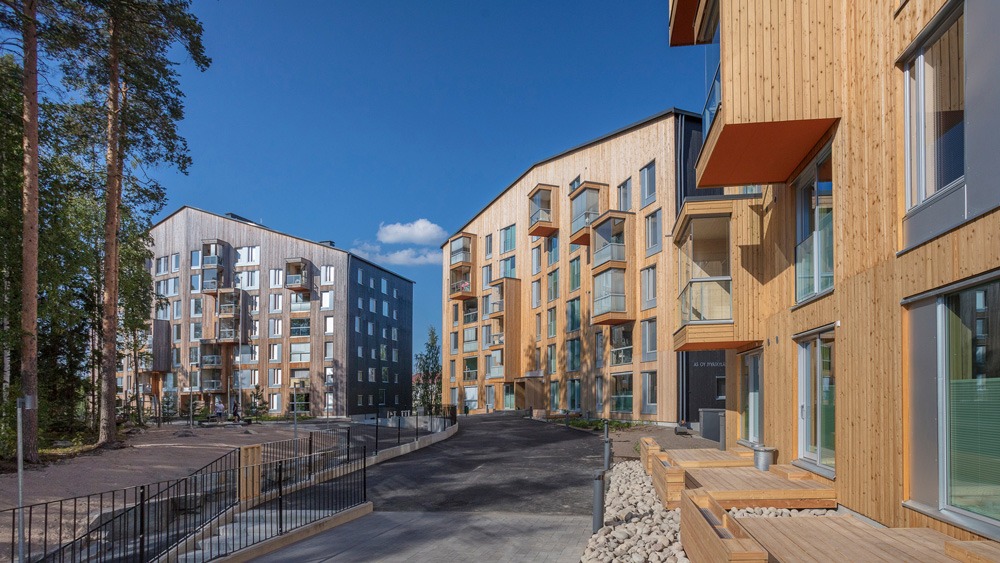
If you speak to an urban economist about why housing is so expensive, they will typically cite two gaps. [One is] the gap between the number of people who want an affordable unit and the number of affordable units that exist. They will also talk about the gap between wages and rent…Do they speak to speculation? Do they speak to the historic recission of the federal role in housing production? No.
Krystle Okafor, “Reconceiving the Federal Role in Housing Policy,” 2021
Prior to the COVID-19 pandemic, millions of people in the US already struggled to afford housing. In 2019, based on data from Harvard’s Joint Center for Housing Studies, 37.1 million households—more than three in 10 Americans—were “housing cost burdened,” spending 30 percent or more of their income on housing, while about one in seven households—17.6 million total—were “severely cost burdened,” spending half or more of their income on housing.
It hasn’t gotten any better since. When the pandemic-induced economic shutdown took place in 2020, there was a surge in tenant organizing. This tenant organizing protected many, but rent has continued to climb, making housing even more unaffordable. In 2021, the average monthly rent nationwide increased by 14.1 percent.
Last summer, NPQ, in partnership with Shelterforce, offered a webinar on social housing—a comprehensive approach centered on a combination of public and nonprofit housing provision. As New York University (NYU) professor Gianpaolo Baiocchi—a panelist on that webinar along with NYU law school student Krystle Okafor—and coauthor H. Jacob Carlson noted last year in Boston Review, the dominant approach to affordable housing production in the US has consisted of “subsidies and tax-breaks for private developers.”
This system has been highly profitable for real estate interests but has failed to generate the amount of affordable housing needed and has perpetuated structural racism in the housing market. What is required instead, Baiocchi and Carlson argued, is “a housing system where a significant portion of housing provision happens outside of the market”—in other words, social housing.
This year, a new report by Amee Chew, Social Housing for All: A Vision for Thriving Communities, Rental Power, and Racial Justice, published by the Center for Popular Democracy and Renters Rising, takes up these issues. Chew’s report identifies how the US housing system has become a housing inequality machine. It lays out how social housing works in other countries, such as Finland and Austria, and it specifies how to implement a social housing approach in the United States.
The US Housing Inequality Machine
So how did affordable housing become so scarce in the first place? Chew’s report identifies some of the mechanisms. Three key levers are the following:
- Follow the (federal) money
Back in the 1970s, federal expenditures for the US Department of Housing and Urban Development (HUD)—i.e., the agency charged with ensuring housing affordability—had a (suitably) larger budget than federal subsidies for high-income homeowners and wealthy investors. However, by the mid-2000s, tax expenditures—that is, write-offs that upper-middle class and wealthy taxpayers use to reduce their tax payments, such as mortgage interest and property taxes deductions and reduced rates on capital gains income—exceeded HUD’s budget by more than a factor of three (7). In other words, current US housing policy grossly underspends on affordable housing and grossly overspends on subsidizing housing for the wealthy.
How badly does the US government underinvest in affordable housing? Chew points out that back in 1978, the federal government spent 1.41 percent of gross domestic product (GDP) on affordable housing. By 2018, that number had fallen to 0.25 percent of GDP (19). Total GDP today in the US exceeds $24 trillion. If the US spent an additional one percent of GDP on housing today, that would be $240 billion a year.
- Discounted sale of foreclosed properties to corporate buyers
The Great Recession had a devastating effect on homeownership rates in Black and Latinx communities. As economist James Carr wrote in NPQ back in 2020, during the Great Recession, “median net wealth for Latinx and Black households fell 44.3 percent and 47.6 percent, respectively. Non-Latinx white wealth fell by 26.2 percent.” Between 2006 and 2014, nearly 10 million US homeowners lost their homes to foreclosure.
Who acquired the foreclosed properties? As Clara Miller detailed in NPQ last year, corporate buyers often swept in. This practice, she notes, was seen by federal regulators “as a means to fast-track the acquisition of a large backlog of distressed properties.” It also marked, adds Miller, “the largest stripping of assets from working class and BIPOC communities in US history.” As Chew explains, this process of corporate consolidation of property ownership continues today. According to Chew, “In 2021, investors bought one in seven homes sold in top metropolitan areas nationwide, the most in over two decades; they targeted these purchases in majority Black neighborhoods” (6).
- Real estate speculation
As Chew observes, “Wealthy investors often treat buildings as tax shelters. And whether the buildings sit empty, no longer functioning as actual homes but as ‘safe deposit boxes in the sky,’ is incidental to big investors” (6). This, of course, fuels gentrification. As Chuck Collins has detailed, the city of Los Angeles alone has tens of thousands of empty housing units, as many global investors have taken to using real estate as a way of hiding their assets, with anonymous ownership entities often holding legal title. This global investor capital, adds Collins, has super-charged “gentrification dynamics by injecting additional cash and disruption into the market.”
The Social Housing Alternative
From the 1930s through the 1970s, the main federal housing program in the US was public housing. At its peak, there were over 1.3 million units of public housing. As of 2021, that number has fallen to 958,000. Beginning in the 1970s and 1980s, US housing policy shifted to providing vouchers (subsidies to private landlords) on one hand, and tax credits (often purchased by banks to offset corporate income tax liabilities) to finance affordable housing production on the other. As Chew details, this shift to private provision not only enables for-profit firms to get their “cut” of affordable housing subsidy dollars. In programs like the low-income housing tax credit program, this shift also means that affordability restrictions often come with an expiration date.
For these reasons, Chew advocates a shift back toward public provision, while also supporting community production through cooperatives and nonprofit community land trusts. But her vision of social housing is far more ambitious than simply advocating for a return to adequately funded public housing. Rather, she outlines an extensive set of principles to guide policy (21). These include the following:
Sign up for our free newsletters
Subscribe to NPQ's newsletters to have our top stories delivered directly to your inbox.
By signing up, you agree to our privacy policy and terms of use, and to receive messages from NPQ and our partners.
- Decommodification of land and housing—housing as a right
- Deep affordability and scale—housing as “reparations, designed by and for Indigenous, Black, Brown and other communities of color”
- Commitment to quality construction and accessibility
- Democratic community control and tenant rights, including rights for tenant unions
- Racial and gender justice, including a focus on spatial desegregation
- Integration with care infrastructure (e.g., childcare, elder care)
- Green construction methods
- A commitment to solidarity economics, defined as part of a “larger interconnected cooperative economy—including labor unions, worker cooperatives, public banks, and more—that is organized around meeting human needs, rather than profit”
Lessons from Finland and Austria
But can social housing work?
To build her case, Chew compares Vienna, Austria with Philadelphia. Both cities, she notes, have roughly similar populations. So, how do their housing policies compare?
Vienna Philadelphia
Public housing 220,000 units 12,850 units
Subsidized housing 200,000 units 13,640 units
Total 420,000 units 26,490 units
Notably, Vienna has more than 15 times as much available social housing as Philadelphia. All told, in Vienna, 46 percent of homes are off market and 60 percent of residents live in some form of social housing.
To understand the issue at a national level, Chew compares the US to Finland. Nationwide, Chew notes that four percent of US housing is public or subsidized in some way, compared to 16 percent of housing in Finland. Scale, Chew notes, is important. If social housing is a large enough proportion of the total housing stock, then “it is able to lower housing prices and dampen speculation throughout” (28). The Finnish system, she notes, combines multiple institutions to support affordable housing. Not only do cities own housing (about 60,000 units in Helsinki alone), but a publicly owned company builds much of the housing, and construction is financed by a public bank (11).
Towards a US Social Housing Vision
The struggle for social housing in the US remains a difficult one. But Chew outlines a few areas of possibility. At the federal level, the $150 billion-plus that Build Back Better would have provided is clearly blocked, at least for the time being. As Chew details, Representative Ilhan Omar (D-MN) has introduced a 10-year, $1 trillion Homes for All bill that maintains a vision of what federal social housing policy could look like.
But while federal action in the short term is unlikely, there is greater promise in some places at the state and local level. One possible tool, Chew notes, are land banks, which are increasingly common public agencies at the county level in the US, although they typically have a narrow purpose of acquiring and revitalizing tax-delinquent, distressed, or vacant property. In Europe, Chew points out, public land banks have often been employed to acquire land for social housing.
One place where social housing ideas are starting to make inroads is in California. In 2019, the state passed public banking legislation enabling the eventual creation of public bank authorities in cities within the state. In July 2021, the state allocated $500 million to support community land trust acquisition of foreclosed properties. The funds also are aimed at retarding the pace of the corporate real estate acquisitions detailed above.
Chew also notes the rise of “community opportunity to purchase act” (COPA) legislation at the local level, such as a 2019 law passed in San Francisco; the passage of rent control in St. Paul, Minnesota in 2021; and legislation passed in 2021 in New York state that facilitates the conversion of distressed hotels into affordable housing.
The range of possible policy action and advocacy is extensive. As Chew points out, “Cities…can all pass measures to create public banks, land banks, acquisition funds, housing trust funds, accelerator funds, and more, to support the development of social housing.”
In conclusion, Chew sees in social housing policy a vital tool, which can begin to “correct the impacts of past racist housing policy” (40). Such a policy framework, she adds, will enable families to “have access to quality, stable housing regardless of their household members’ economic circumstance, race, gender, immigration status, physical and mental ability, or criminal legal history” (41). To get there, Chew insists, tenant organizing must be at the center of how social housing policy is achieved. To stay there, she adds, will demand democratic accountability rooted in a vision of solidarity.











